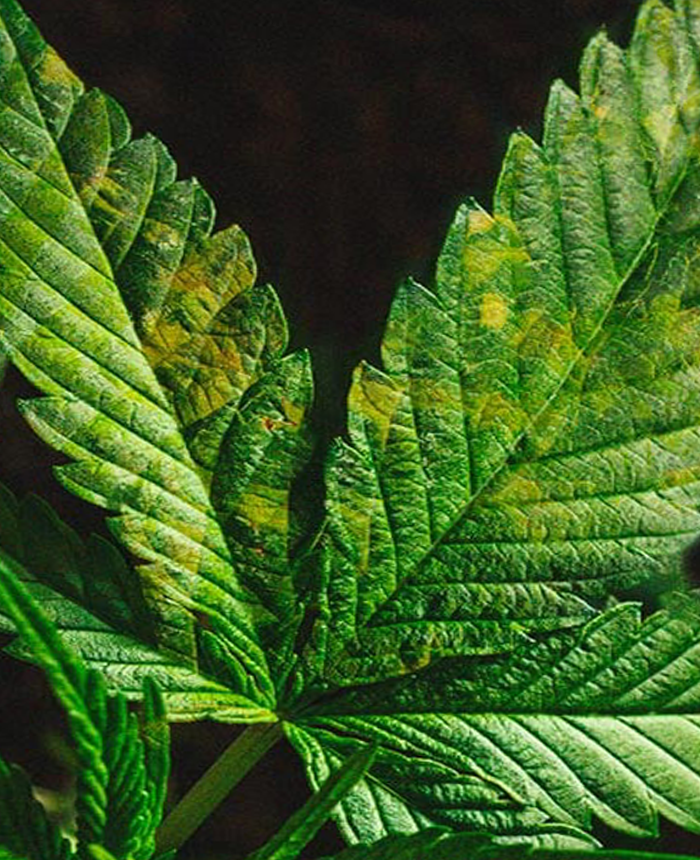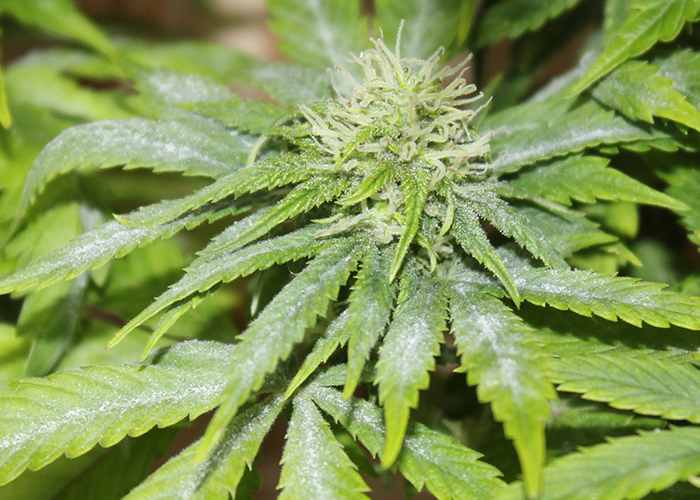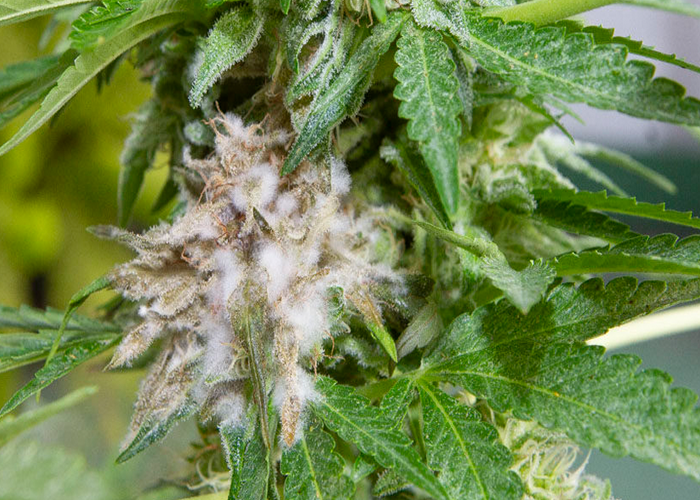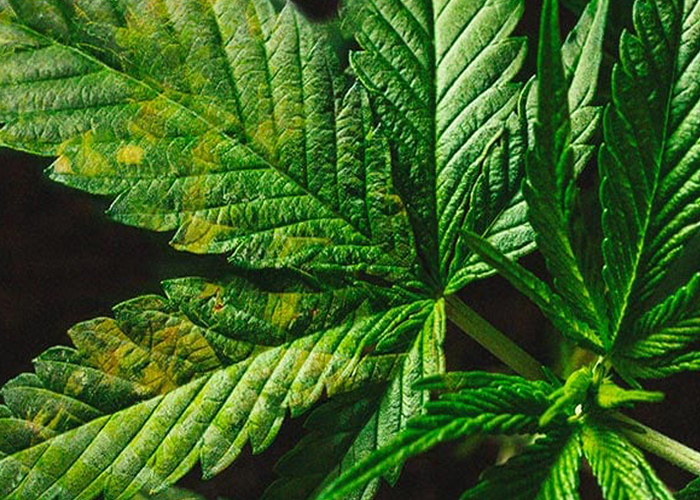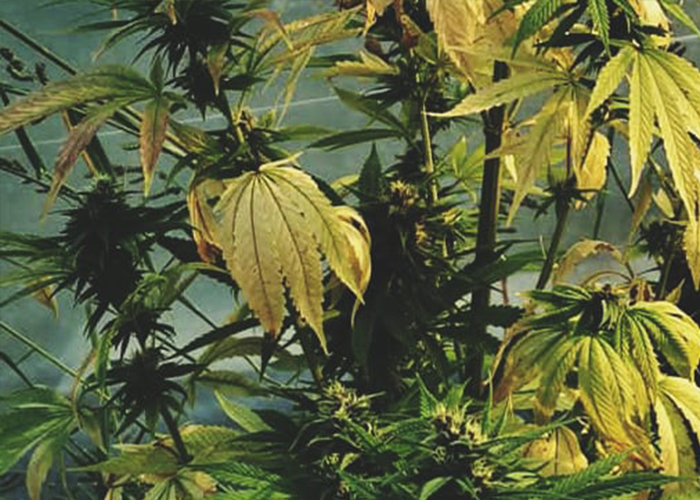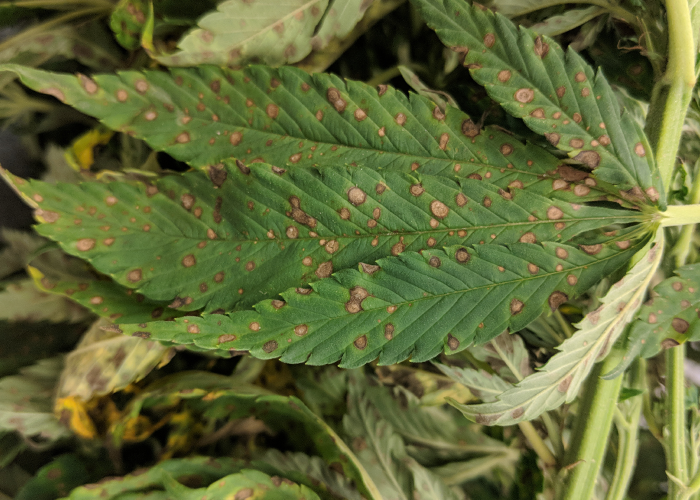No products added!
Written by
webmaster
10 March 2023
Cannabis plants are susceptible to various diseases that can hinder their growth and yield. It is essential for growers to be aware of these common diseases and understand how to prevent and treat them. In this article, we will examine some of the most common diseases affecting cannabis plants and the steps you can take to protect your crops.
Powdery Mildew:
Powdery mildew, also known as white mold, is a common fungal disease that can affect cannabis plants. Here are some tips on how to recognize, prevent, and treat powdery mildew in cannabis:
Recognizing Powdery Mildew:
- Powdery mildew usually appears as a white, flour-like substance on the leaves, stems, and buds of cannabis plants.
- Infected leaves may develop yellow or brown spots, curl up, or discolor.
- Powdery mildew can also cause buds to appear wilted and dried, reducing resin production.
Preventing Powdery Mildew:
- Keep a clean and well-ventilated environment to reduce humidity and promote air circulation.
- Avoid extreme temperature fluctuations and maintain proper humidity levels (between 40-60%).
- Avoid overcrowding plants, as this can impede air circulation and increase humidity.
- Prevent overwatering, as excess moisture promotes powdery mildew growth.
- Avoid touching infected plants without protection, as you can spread mildew spores to other plants.
Treating Powdery Mildew:
- Isolate infected plants immediately to prevent the spread of mildew to others.
- Carefully remove the infected parts of the plant with clean, disinfected scissors to prevent spreading.
- Use natural antifungal solutions, such as diluted baking soda (1 teaspoon per liter of water), and spray the affected plants every few days until symptoms disappear.
- In more severe cases, specific fungicides for powdery mildew may be used. Follow the manufacturer’s recommendations and instructions carefully.
- Strengthen plant resistance by using balanced fertilizers, maintaining optimal growing conditions, and providing adequate ventilation.
It’s essential to take action as soon as you identify powdery mildew on your cannabis plants, as the infection can quickly spread and affect the entire crop. For recurring issues, consulting a cannabis specialist for more specific advice can be helpful.
Botrytis (Gray Mold):
Botrytis, also known as gray mold, is a fungal disease that can affect cannabis, caused by the fungus Botrytis cinerea. Here’s how to recognize, prevent, and treat botrytis in cannabis:
Recognizing Botrytis:
- Early signs of botrytis include brown or gray spots on the leaves, flowers, or buds of cannabis plants.
- These spots can develop into a layer of gray, fuzzy mold.
- Affected parts of the cannabis plant may soften and deteriorate rapidly.
Preventing Botrytis:
- Ensure good air circulation around your cannabis plants by properly spacing them.
- Avoid high humidity levels in the grow room. Use dehumidifiers if necessary.
- Avoid overwatering the plants and ensure the substrate dries between waterings.
- Remove dead or damaged leaves and infected plant parts as soon as they are noticed.
- Avoid touching cannabis plants with wet or damp hands, as this can spread spores.
Treating Botrytis:
- If you notice signs of botrytis, the first step is to remove all infected parts of the plant.
- Avoid handling infected plants and then touching healthy plants without washing your hands or disinfecting tools.
- In severe cases, sulfur- or copper-based fungicides can be used. Always follow the product’s instructions carefully.
- Strengthen the general health of your plants by providing balanced nutrition and minimizing environmental stress.
Rust:
Rust is a common fungal disease that can affect cannabis plants, usually caused by fungi such as Puccinia, Phakopsora, and Uromyces. Here are some tips for recognizing, preventing, and treating rust in cannabis:
Recognizing Rust:
- Rust typically appears as orange, brown, or red spots or pustules on cannabis leaves.
- The spots may be slightly raised and have a powdery texture.
- The disease can spread quickly to upper leaves, stems, and even buds.
Preventing Rust:
- Avoid excess humidity: Rust thrives in moist conditions. Ensure your grow space is well-ventilated and maintain appropriate humidity levels (40-60%).
- Avoid significant temperature fluctuations: Extreme changes in temperature can weaken plants and make them more susceptible to diseases like rust. Keep conditions stable.
- Isolate infected plants: If you detect rust, immediately separate the infected plants to prevent spreading.
Treating Rust:
- Remove infected parts: If rust appears on your plants, remove the affected leaves or plant parts immediately.
- Use fungicides: Specific fungicides designed to fight rust can be used. Follow the product’s instructions carefully for effective treatment.
- Strengthen plant resistance: Proper growing practices like balanced nutrition, moisture management, and adequate airflow help boost resistance to diseases like rust.
Root Rot:
Root rot is a common issue that can affect cannabis plants. Here are some tips to recognize, prevent, and treat root rot in cannabis:
Recognizing Root Rot:
- Sudden yellowing or wilting of leaves.
- Slowed growth.
- Brown or black spots on roots.
- Poor water absorption, leading to soil drying.
Preventing Root Rot:
- Ensure the growing medium has proper drainage. Use substrates designed for cannabis that drain well.
- Avoid overwatering. Allow the substrate to dry partially between waterings to give oxygen access to the roots.
- Use pots with drainage holes to allow excess water to escape.
- Avoid water pooling in trays under the pots.
- Maintain good airflow around the plants to reduce excess humidity.
Treating Root Rot:
- Identify affected plants and isolate them to prevent the spread of the infection.
- Gently remove the soil around the roots to inspect their condition and cut off any rotting parts.
- Treat roots with an appropriate fungicide to eliminate pathogens causing the rot.
- Replace the substrate with fresh, sterile, well-draining soil.
- Adjust watering practices to avoid recurrence.
Alternaria:
Alternaria is a fungal disease that can affect cannabis. Here’s how to recognize, prevent, and treat Alternaria in cannabis:
Recognizing Alternaria:
- Early signs include small black or brown spots on the leaves.
- These spots can grow into larger necrotic lesions.
- Affected leaves may discolor, wilt, and eventually fall off.
Preventing Alternaria:
- Maintain hygiene: Regularly clean the growing environment to remove plant debris and reduce spore spread.
- Ensure good airflow: Proper ventilation reduces humidity, which makes the environment less conducive to Alternaria development.
- Avoid extreme fluctuations in temperature and humidity, as these can promote fungal infections.
- Use healthy, disease-resistant seeds for planting.
- Avoid overwatering, as constant moisture encourages fungal growth.
Treating Alternaria:
- Remove infected plant parts as soon as they are detected.
- Use appropriate fungicides: Consult an expert to select the right fungicide for cannabis and follow usage instructions carefully.
- Strengthen plants by providing balanced nutrition, proper irrigation, and adequate lighting.
Prevention is key to avoiding fungal diseases like Alternaria.

